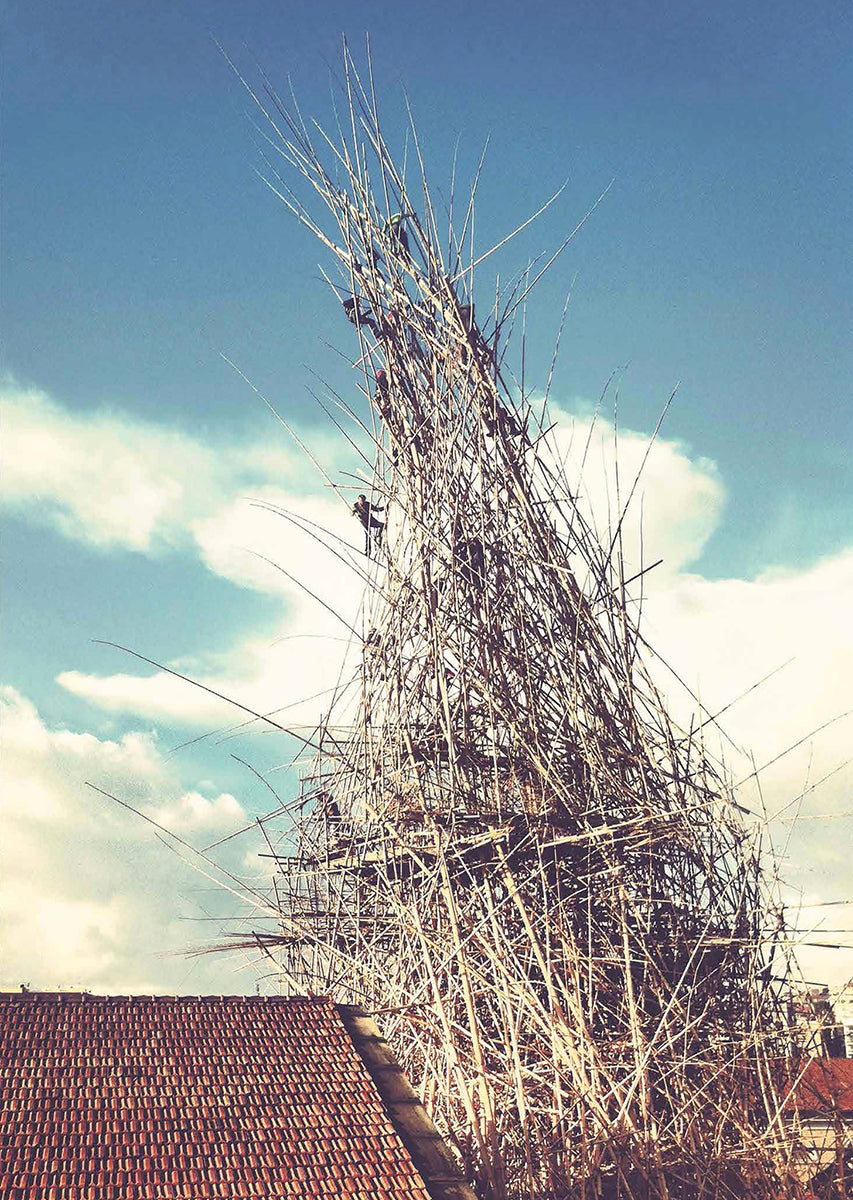The bamboo “Architecture-Sculptures” by Mike and Doug Starn are able to transform locations radically. The apparent lightness of these structures brings an idea of spiritual, not geographical, nomadism to mind. Their construction is a process of coordination rather than organization, just as the construction of the ships in the Republic of Venice during the sixteenth century: the tension of the work comes to life from this interlocking of seemingly antique building methods and the clearly evident contemporary result.
These sculptures, albeit of enormous dimensions, are in no danger of expressing neither monumentality nor self-celebration. The series in bamboo is in reality an “anti-monument” that lauds the creative process and conviviality. Through this work, the Starn brothers have shown that it is possible to create one of the very few pieces of contemporary art that despite being presented as a sculpture embraces organics and life and demonstrates the ability to draw in the spectator and englobe the viewer as an integrating part of the process. Also the choice of materials, simple yet extremely strong, in itself conveys a powerful message and symbolism that evokes concepts of optimism and flexibility - flexibility that not only refers to the physical properties of the material but also to those relating to the mental and conceptual.
It may be said that the bamboo project is a representation in space of the human activity known as imagination. The Starn piece is much more complex than a simple tower. The work doesn’t only bond to a vertical architectural development. The structure allows both the vertical and horizontal to cohabit in the spaces. It doesn’t merely rise but also spreads outwards; it moves skywards again to then return to the ground. The unpredictable crisscrossing of the bamboo also serves to reflect the contradictions of human life which is much more similar to an intricate entwinement, however perfectly calculated, than an ascent to the top of the tower. Even in its precision, the project appears as an impromptu process: the visitor must respond to this extemporaneousness by moving unpredictably and spontaneously within the piece itself.
There is playfulness in the Starn brothers’ work even though it is neither a toy nor an amusement park. At an amusement park visitors are asked to abandon themselves to the space. This piece requires the visitor to actively participate, as if the work had never been finished; were in constant transformation - as if the sculpture built itself in its own unique way every time a spectator entered. This is a “magical” piece of architecture and sculpture that answers to the individual’s culture rather than a collective one despite being the fruit of a collective effort. It is an effort that with every step opens the doors to new personal experiences that at times can even be intimate.
Even in its details, like the ropes that bind the joints and the intercrossing bamboo, all show the individual gesture that is manual and not mechanic. It is not a piece that can be banally termed ecological. It is biological. From its conception to its realisation to ultimately its fruition, this piece has always been alive. It is an organism that transforms, moves and adapts itself to natural time as if it were human time. It is an organism that grows not in dimensions but in sensations.
—Francesco Bonami

